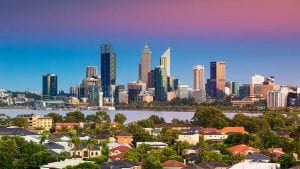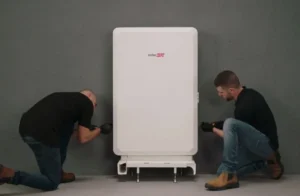Australia’s biggest utilities are passing on the surging cost of the country’s predominantly coal-fired grid to household electricity consumers at the start of the new financial year, but it seems pretty clear that many solar households are missing out.

Electricity consumers across the country are facing rate increases of up to 10 per cent or more, potentially adding $200 to their annual electricity bill, or $260 in the case of South Australia. Most of this is due to an increase in the wholesale price of electricity, and the biggest factor in that increase has been the soaring cost of gas.
But household producers of solar power are not getting such a good deal for the power they export back to the grid. In some states their rate will not change at all, in other states they are barely catching up with the big increases being pocketed by the utilities with large amounts of coal and gas power.
Households in Victoria are getting the worse deal, being paid only 5c/kWh by the major retailers, under guidance from a formula put together by the Essential Services Commission.
That formula is supposed to be based on wholesale prices, but in Victoria, wholesale prices have fallen below 5c/kWh (represented as $50/MWh in the wholesale markets) on just two occasions since May 24. Extraordinarily, the feed in tariff is actually lower than last year (6.2c/kWh) because the ESC forecast a fall in wholesale prices.
They got that badly wrong. So, while the big generators have been reaping in large profits from the largely unexplained surge in wholesale prices, households are missing out.
The ESC has been asked by the Victoria government to consider a “fair” solar tariff, which could – for the first time in Australia – include the benefits of solar power (such as avoided and deferred network peaks, deferred infrastructure spending and environmental benefits), rather than just its “costs”.
The ESC completed the first part of that review in May, suggesting a benefit from its avoided climate impacts, but apparently not finding any data to support other environmental benefits from using less coal. (Clue: Read this report about 23,000 deaths attributed to coal in EU). It will look at network benefits later this year.
Consumers in NSW and south-east Queensland also struggle to get a good deal. In those regions, there is no mandatory tariff, just a guide that retailers are under no obligation to follow.
In south-east Queensland, (Brisbane, Gold Coast and Sunshine Coast), the major retailers such as Origin and AGL pay 6c/kWh. But wholesale prices, according to the Australian Energy Regulator, average 8.9c/kWh in the March quarter and were even higher in the June quarter. (The final data has not been completed).

This impacts a growing number of solar households. According to Energex, the local network operator, 126,622 households with 474MW of capacity are on this rate (in red above), while 180,000 households with 558MW of capacity (in blue) still enjoy the premium tariffs that last until 2028.
Around 1,000 homes add solar each month and about the same number churn off the premium tariff to the new retail tariff because of house sales, additions or other.
In NSW, the main retailers – Origin and AGL – are offering 6c/kWh, unchanged from the previous year. Some smaller retailers are offering more. That is within the ‘benchmark range’ set by IPART, which was raised from 4.7-6.1c/kWh to 5.5-7.2c/kWh.
That will be of interest to the 146,000 solar households who currently enjoy “gross tariffs” of 60c/kWh or 20c/kWh (plus retail add-ons) that will expire at the end of the year.
That is expected to drive a rapid uptake of battery storage. Indeed, the two states with the lowest recommended FiTs – Victoria and NSW – are the two states were battery storage uptake is expected to be the highest.
The story in other states is mixed. Tasmania recently announced the biggest percentage increase in solar feed in tariffs, lifting its rate to 6.67c/kWh. That followed soaring wholesale prices as the state’s dams ran dry, curbing hydro output, and the cable to the mainland was lost. Expensive gas and diesel filled the gap, pushing up prices.
In other states, South Australia offers 6.8c/kWh to new solar households, West Australia offers between 6 and 9c/kWh, and ACT has a “voluntary” level of between 5c and 7.5c/kWh.
In regional areas, solar households get a better deal. Ergon, in regional Queensland, is required to offer 7.44c/kWh to take account of lack of retail competition and “transmission losses”, although it takes no account of the likely benefits of local generation.
It is an increase, however, from last year, when the rate was set at 6.2c/kWh, but it is still well short of the wholesale price of electricity in Queensland, which is jumping sharply because of the rising cost of gas. But in south-east Queensland, there has been no increase at all.
Northern Territory, which operates a separate grid, offers 20c/kWh, while Horizon Power, in regional West Australia, offers a range of 8c/kWh up to 50c/kWh depending on the area. The higher rates are in off-grid towns where solar competes against the cost of diesel.
Source: One Step Off The Grid. You can sign up to the weekly newsletter here.







